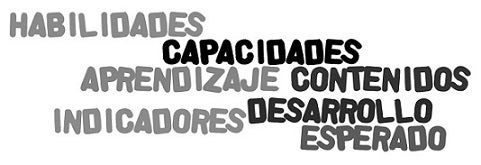By Christine Van Keuren.
Over the last few months, it has been my great pleasure to conduct a comparative analysis of the early learning guidelines (ELGs) of 19 early childhood development programs across 13 Latin American and Caribbean countries. My colleagues, Diana Rodríguez-Gómez and Maggie Morrison, and I analyzed ELGs or what children should know or demonstrate as a result of participating in a particular program, for infants and toddlers (i.e. children from birth to 36 months of age). To conduct this analysis, we used an adapted version of a framework developed a few years ago in the United States by Scott-Little and others. We learned a great deal while conducting this analysis and I’d like to share just a few of the emerging concepts which appear to matter most.
Conceptualizations and Terminology: One aspect of the research which fascinated our team was how differently programs conceptualized early childhood development. These differences in conceptualization were reflected in the terms programs used for their ELGs. We found terms such as as “capacities”, “skills”, “development”, “content”, “indicators,” “expected learning” and “learning outcomes.” These differences in terminology can complicate communications between early childhood stakeholders and make comparing similar concepts problematic.
Age of the Document: The documents we evaluated ranged from publication dates from 1997 to 2011. While all of the documents evaluated were archival and only illustrate the intentions of the curriculum authors, the older the document perhaps the less relevant are these historical intentions on the actual happenings in the learning environment. A significant difference already exists between curriculum intentions and actual implementation but the age of the document may play a role in widening this gap.
Modality: The programs included in our research had three different modalities, or educational environmments. These were parenting programs, community-center-based care, and child development centers. We recognize that parenting programs are disting from center-based program and therefore, some caution must be used when direct comparisons are made. We note that, in theory, the setting in which a program takes place should not impact the number or type of ELGs. However, we found that the ELGs did vary by modality. For example, evaluating social-emotional, linguistic, physical motor and cognitive ELGs, our research shows that parenting programs, at least on paper, address fewer cognitive outcomes than the other two modalities. This, added to the fact that the implementation process, training procedures, support materials and time on task details (i.e. intensity of the intervention) are also different depending on the program modality, hints that children who require the strongest interventions are perhaps receiving them the least.
Age Structure: Some curricula noted child age in terms of years instead of months. The age structure is important for several reasons. First, it may be confusing to early learning stakeholders if ELGs noted for children aged 2-3 years is appropriate for children who are 24-36 months or 35 to 47 months. Second, wide variations in age structure may not highlight children with learning differences. Finally, clarity in age structure is important as programs integrate with those which serve children beyond the age of 36 months. The US study cited earlier found similar results.
Implementation: Finally, ELGs can be clearly written, relevant, and age specific but, in the end, they can only inform the day to day happenings in the learning environment. ELGs, as with every other aspect of curriculum, are dependent, ultimately, upon two critical components- well trained teachers and healthy children who are ready to learn. In the absence of these, ELGs are simply words on paper.
Christine Harris-Van Keuren is doctoral student at Teachers College, Columbia University. She holds a M.Ed from Harvard Graduate School of Education.


Leave a Reply